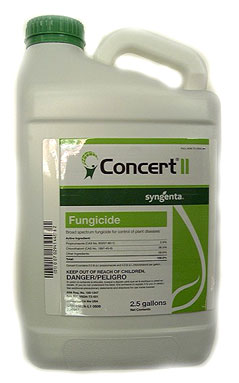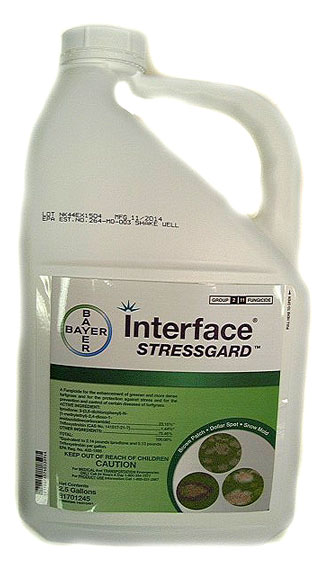Book 7, part I … are you kids as excited as I am?
Maybe some of you went to the midnight showing last night?

My main post is about Reserve, but at the bottom I have some follow-up comments about granulars.
.
RESERVE
.
Last week I accidentally gave away a little bit of my story prematurely. Maybe it was my headachy/sleepy day, but I thought my fungicide assignment was Renown, not Reserve, and shared a little bit about a 2010 that included Reserve. You can look back at my post last week where Reserve was one component to a couple of program trials.
.
What is Reserve? It’s a new formulation from Bayer that combines triticonazole (0.54 pounds active ingredient/gallon) and chlorothalonil (4.25 pounds a.i./gal) as well as StressGuard.
.
It is labeled for quite a few diseases: anthracnose, brown patch, microdochium patch/pink snow mold, typhula snow mold, necrotic ring spot, red thread, rust, summer patch, take-all, large patch, and dollar spot as well as algae and summer decline.
.
Like other triticonazole products, there is potential for damage to bermudagrass. The label indicates that it should not be used at all on ultradwarf bermudagrass varieties. In addition, the label says not to exceed 5.4 fl oz/1000 every 30 days on any type of bermudagrass, and, for golf courses in Florida, do not apply Reserve to bermudagrass greens when temperatures exceed 90. Lane talked about this topic awhile back, and you can read about it here:
http://turfdiseases.blogspot.com/2009/10/effects-of-dmi-fungicides-on.html
.
How has Reserve performed in KSU trials? As I said, it worked well as part of the program trials this year, and you can see last week’s post.
.
In 2010, we also compared Reserve with Concert, which is a formulated combination of propiconazole (0.3 pounds a.i./gal) and chlorothalonil (4.0 pounds a.i./gal).
Concert: applied at 5.5 fl oz/1000
= 5.9 grams propiconazole + 78 grams chlorothalonil/1000 ft2
Reserve: 2.5 fl oz/1000 = 4.8 g triticonazole + 37.7 g chlorothalonil/1000
______3.2 fl oz /100 = 6.1 g triticonazole + 48.2 g chlorothalonil/1000
______3.5 fl oz/1000 = 6.7 g triticonazole + 52.8 g chlorothalonil/1000
.
The 2.5 fl oz rate of Reserve was applied 7 times, on 24 May, 9 June, 22 June, 28 June, 6 July, 14 July, and 20 July. The other treatments were applied 5 times, on 24 May, 9 Jun, 22 June, 28 June, and 14 July.
Disease in the untreated plots bounced around a little bit, peaking twice at around 9% severity. Except for a little bit of breakthrough (2%) in the lowest rate of Reserve, all the treatments held disease around zero (click to enlarge).

As you might expect, the repeated applications of the propiconazole-containing Concert did have some negative DMI-type growth-regulating effects that reduced quality. However, keep in mind that most people would be rotating, not applying the same product over and over. This is an artificial type of situation used in an experiment.

Here are two pics, one with plot borders shown and one without, showing the quality effects associated with the repeated applications of the propiconazole-containing product. The triticonazole-containing Reserve did not have such effects.


Results were pretty similar in a trial I conducted in 2009.

.
Color splash or color crash? It’s not easy being blue-green?
I do have a final question about the StressGuard… I have heard from a couple of superintendents (like, literally, TWO) who don’t like the strong color that is apparent immediately after application. One guy said that he avoids products for that reason, and another said that he’ll water the products in a little bit to wash of the color. Anybody else have comments?

GRANULARS
I have a few comments related to Lane’s posting about granular formulations. I have a few observations for formulations of azoxystrobin.
.
In 2008 I ran two trials for brown patch in tall fescue (lawn-height). In one trial, the applications were done on July 9 and August 5. The trial included Heritage TL at 2.0 fl oz/1000 (5.7 grams a.i./1000) and Heritage 50 WG at 0.4 oz/1000 (5.7 grams a.i./1000). On the morning of August 5, I rated the % blighting per plot before the treatments were applied. Disease in the untreated was at 32.5%. Here's a photo to show some symptoms:

Whereas both Heritage formulations knocked disease down to 0%, like in the plot below.

In a separate trial nearby, I applied Heritage G at either 2 or 4 pounds/1000, equivalent to 2.8 or 5.6 grams a.i./1000. Applications were done on June 30 and July 28, and disease was rated on August 5 (same as the other trial). In this one, the untreated was similar to the other trial, with about 40% blighting. The Heritage G treatments reduced disease to 7.5% (2 pound rate) and 4.5% (4 pound rate). So, while they did significantly reduce disease, it was not down to 0%. This photo shows some breakthrough with a granular treatment (blighted areas circled):

Of course, these trials were not set up to directly compare the granular with the sprayables, but it is consistent with Lane’s comments (and others) that granulars can lack the consistency that you might find with a sprayable formulation.
.
.


 A tractor-mounted sprayer with a hand-gun is a typical agricultural sprayer found at many golf courses in India.
A tractor-mounted sprayer with a hand-gun is a typical agricultural sprayer found at many golf courses in India.






























































